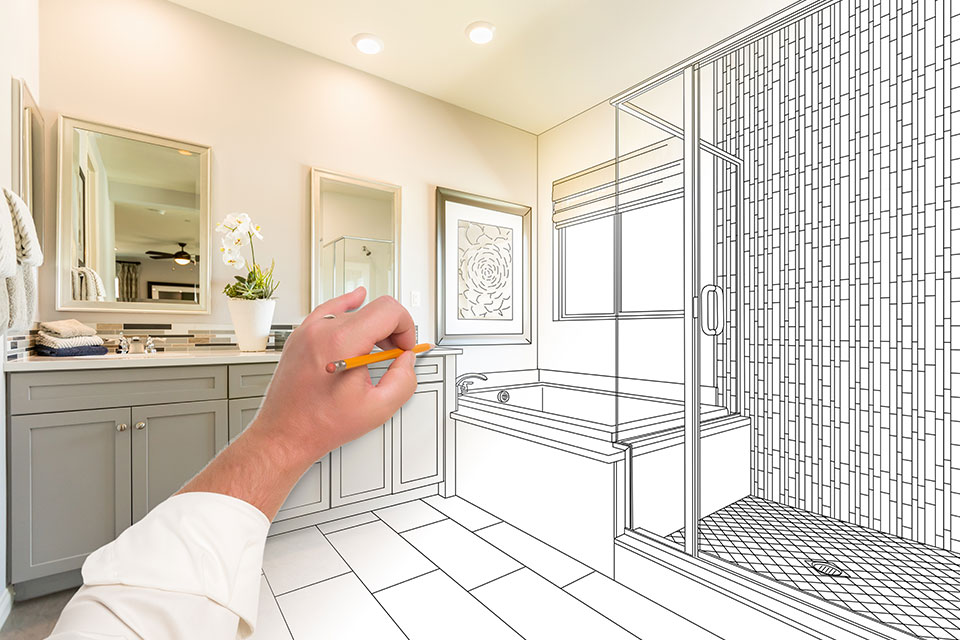How To Choose the Perfect Pantry for Your Lafayette or West Lafayette Kitchen
A kitchen pantry is an essential part of the home kitchen and has been for centuries. It provides the extra storage space we all need to keep our...
4 min read
Admin : Feb 3, 2023 12:00:00 AM

Whether it’s a kitchen enhancement or a complete home refurbishment, one of the biggest questions you’ll face before a new remodeling project is how to finance it. A home remodel is a significant undertaking, so it’s important to consider all the various costs and financial implications ahead of time.There are several different ways to pay for your home improvement project. Which method you choose largely depends on your current financial status and the goals you want to achieve. This article looks at some of the main options available to you as a homeowner in Lafayette or West Lafayette.

The most straightforward way to finance your home remodel is to pay using cash you have saved. Paying in cash ensures you can actually afford the improvements you’re making while at the same time avoiding getting into debt.This method of financing might need some patience, depending on your cash reserves. With the average home remodel costing just under $47,000, paying in cash might require you to wait for a while or prioritize certain rooms.It’s also possible to pair savings with other financing options so you can increase your remodeling budget without taking on too big a loan.

Home improvement loans have a fixed interest rate based mainly on your credit score. These loans are unsecured and don’t use your home as collateral.Offered by banks, credit unions, and several online lenders, home improvement loans can be accessed quickly once terms have been agreed upon. Compared to other types of loans (mentioned later in this article), traditional home remodeling loans have shorter repayment timelines (maximum 12 years) and lower loan amounts (typically up to $100,000).As such, these loans are best suited to small or midsize projects, such as a kitchen remodel or flooring replacement. It’s also important to note that they come with higher interest rates when compared to other loan types.

A home equity loan is a fixed-term loan granted to a homeowner based on the equity in their home. Often referred to as second mortgages, home equity loans arrive as a lump sum which is then immediately paid back in fixed monthly payments.Unlike traditional home improvement loans, home equity loans are secured, meaning your property is used as collateral for the loan. They also come with higher borrowing limits and repayment periods, making them ideal for medium to large remodeling projects.A significant benefit of such loans is the fixed interest rates, meaning you’ll always pay the same monthly payment regardless of market fluctuations. They are also tax deductible if used solely for home improvement.

A Home Equity Line of Credit (HELOC) is similar to a home equity loan but has some key differences. It, too, comes with a fixed interest rate and is delivered in a chosen lump sum. The HELOC is also secured against the equity of your Lafayette home.Where the two differ is that the Home Equity Line of Credit has a variable interest rate and a revolving credit, meaning you can take out what you need when you need it, up to your borrowing limit.HELOCs are ideal for larger projects and have flexible repayment options for up to 30 years. However, variable interest rates mean they can be influenced by market fluctuations. As such, if your credit declines or market interest rates increase, your interest rate will go up.

A cash-out refinance is when you turn equity into cash through refinancing your mortgage. In other words, you can replace your old mortgage with a new one and have the difference paid to you in cash. You can then use these extra dollars to finance a home remodel.This financing strategy means you take out a new and larger loan as compared to your previous mortgage, together with a new interest rate. It’s particularly suitable for homeowners who cannot afford an additional monthly loan payment without refinancing and who might qualify for a better interest rate.A lender will typically determine the amount of cash you can receive based on your property’s loan-to-value (LTV) ratio and your credit profile. It’s generally not recommended to go this route unless you can secure a lower interest rate than you currently have.

For smaller home improvement projects, credit cards are a potential financing option. You can even pay interest-free if using a new credit card with an introductory 0% interest rate.For more significant projects, a credit card becomes more of an expensive option, with APRs ranging from 16% to more than 24%. A large amount of home improvement debt can therefore become very costly indeed and can affect your ability to qualify for other types of loans due to low credit scores.Credit cards are fast and easy for small improvements but are not advisable for bigger projects if you can use one of the other financing options.

A low-cost option for a home improvement project is a government-backed renovation loan. However, such loans are usually only available to certain people. Qualifiers include income level, age, property type, property location, and whether you have a disability.Other loans also cover the needs of particular groups, such as military veterans, Native Americans, and rural residents.Government loans for remodeling are usually there to primarily assist in improving health and safety standards for properties in low-income and rural areas and to add accessibility features for disabled homeowners.Loans from the government tend to have lower interest rates and better terms than regular loans. However, they only apply to a minority of people and are not intended for ‘luxury’ home improvement.

Finally, there’s a specialist payment option specifically for homeowners carrying out a home remodel. It’s called a RenoFi and it’s similar to a traditional home equity loan or home equity line of credit (HELOC) but with some important differences.RenoFi Loans allow you to borrow against the after-renovation value, or future value of your home, as opposed to the current value of your home, like with the previously mentioned loans.The benefit of an appraisal based on the future value of your property means you increase borrowing power by more than 11x while also ensuring that the lowest possible interest rate is secured. And it’s perfect for remodeling projects of any type and scope.Here at Riverside Construction, we offer RenoFi financing options for our customers. You can read more about these on the following page: Home renovation financing.
Riverside Construction, founded in 2008, is the go-to professional design-build team that has earned the respect and confidence of discerning homeowners in the Lafayette and West Lafayette areas.With an award-winning team of highly skilled and experienced professionals in a range of fields, we excel at listening to client ideas and then translating those dreams into reality. We can help you decide on a direction, provide guidance on remodeling issues, and be with you every step of the way to ensure your dream home is achieved.Contact us now to schedule an initial conversation about your upcoming remodel. We’ll happily answer your questions, listen to your ideas, soothe your worries, and work with you to finalize your plans.

A kitchen pantry is an essential part of the home kitchen and has been for centuries. It provides the extra storage space we all need to keep our...

When designing a home lighting plan, designers will often focus first on the important functional and aesthetic qualities of light. While these are...

According to Remodeling’s 2021 Cost vs. Value Report, a mid-range bathroom remodel brings one of the highest returns on investment if and when you...